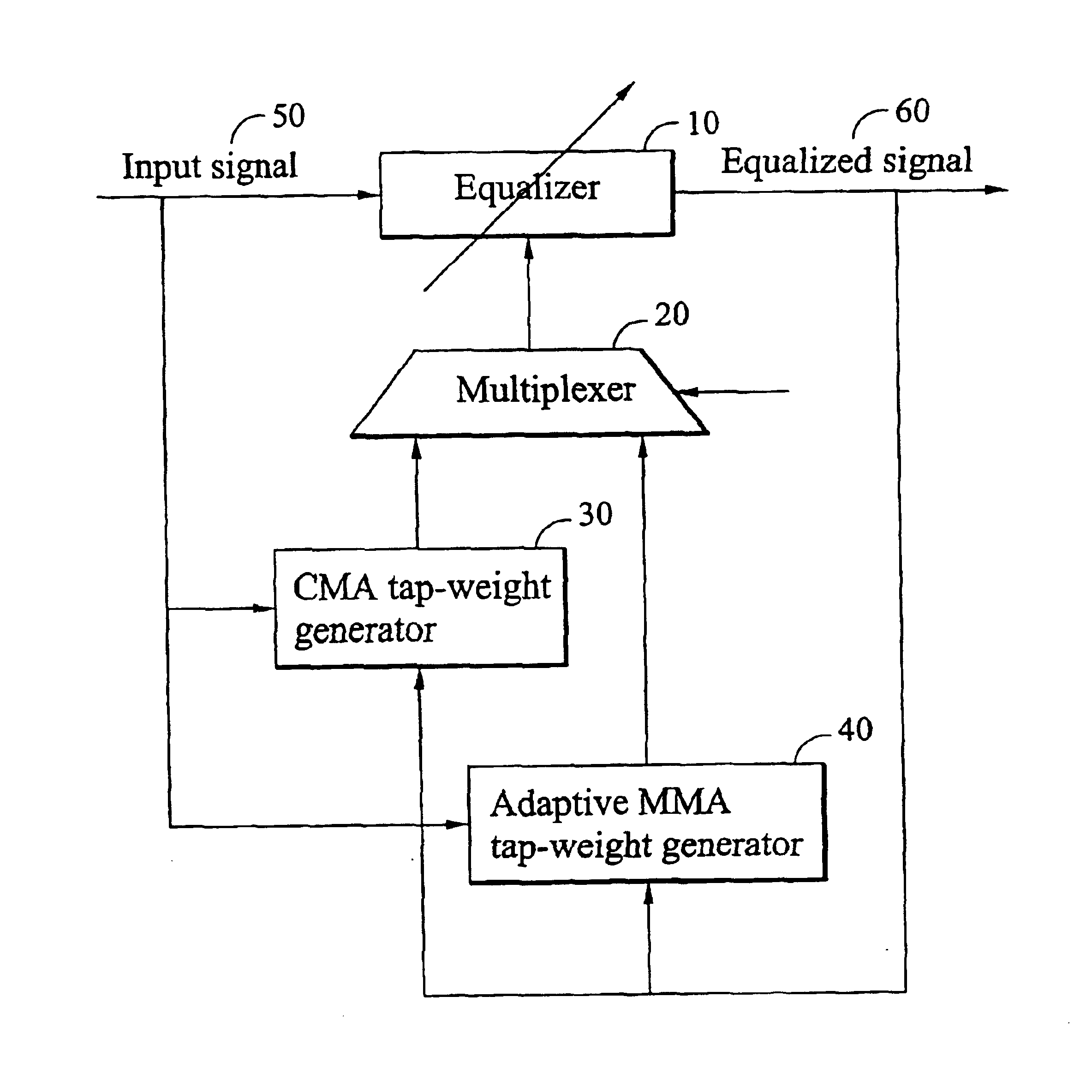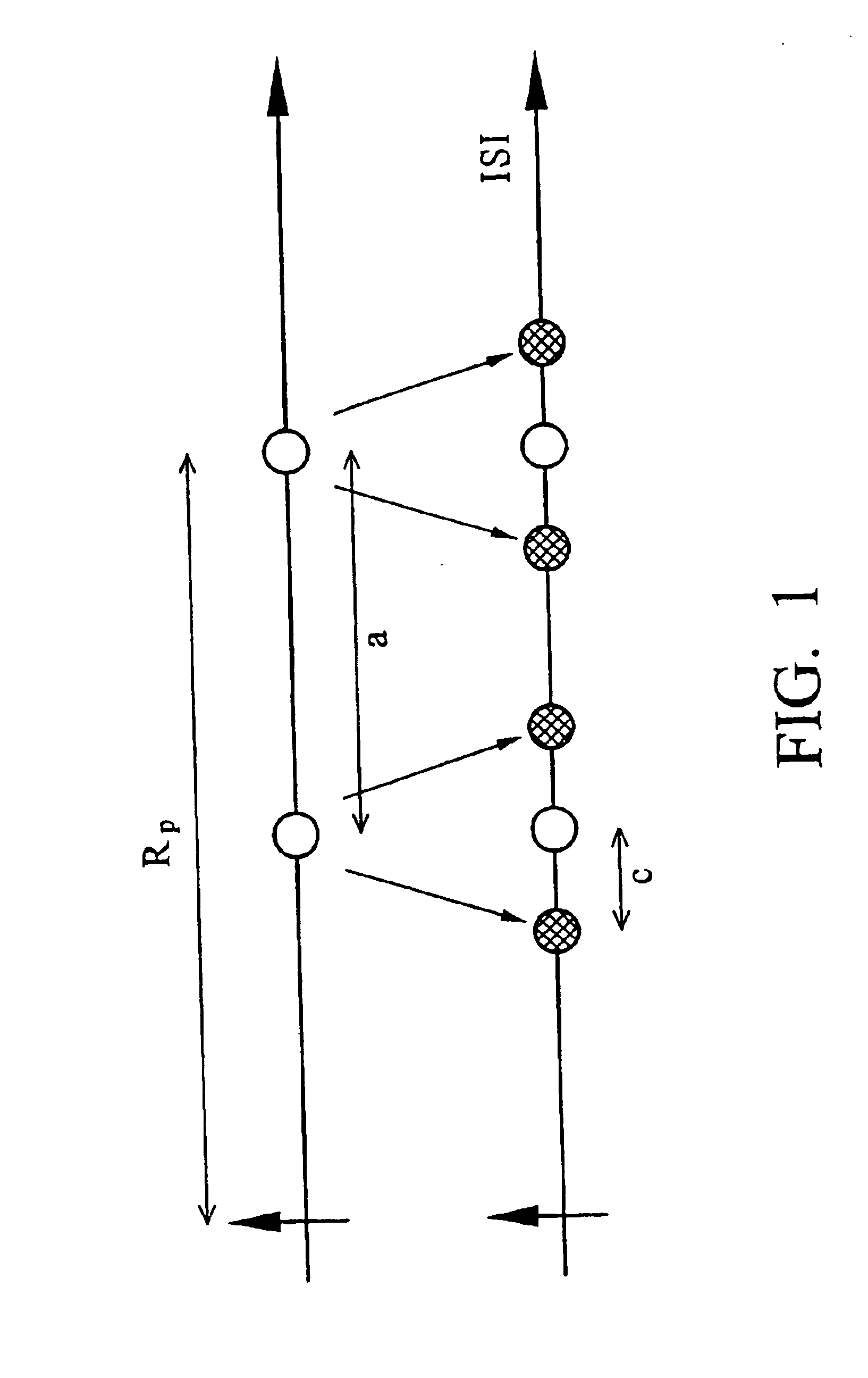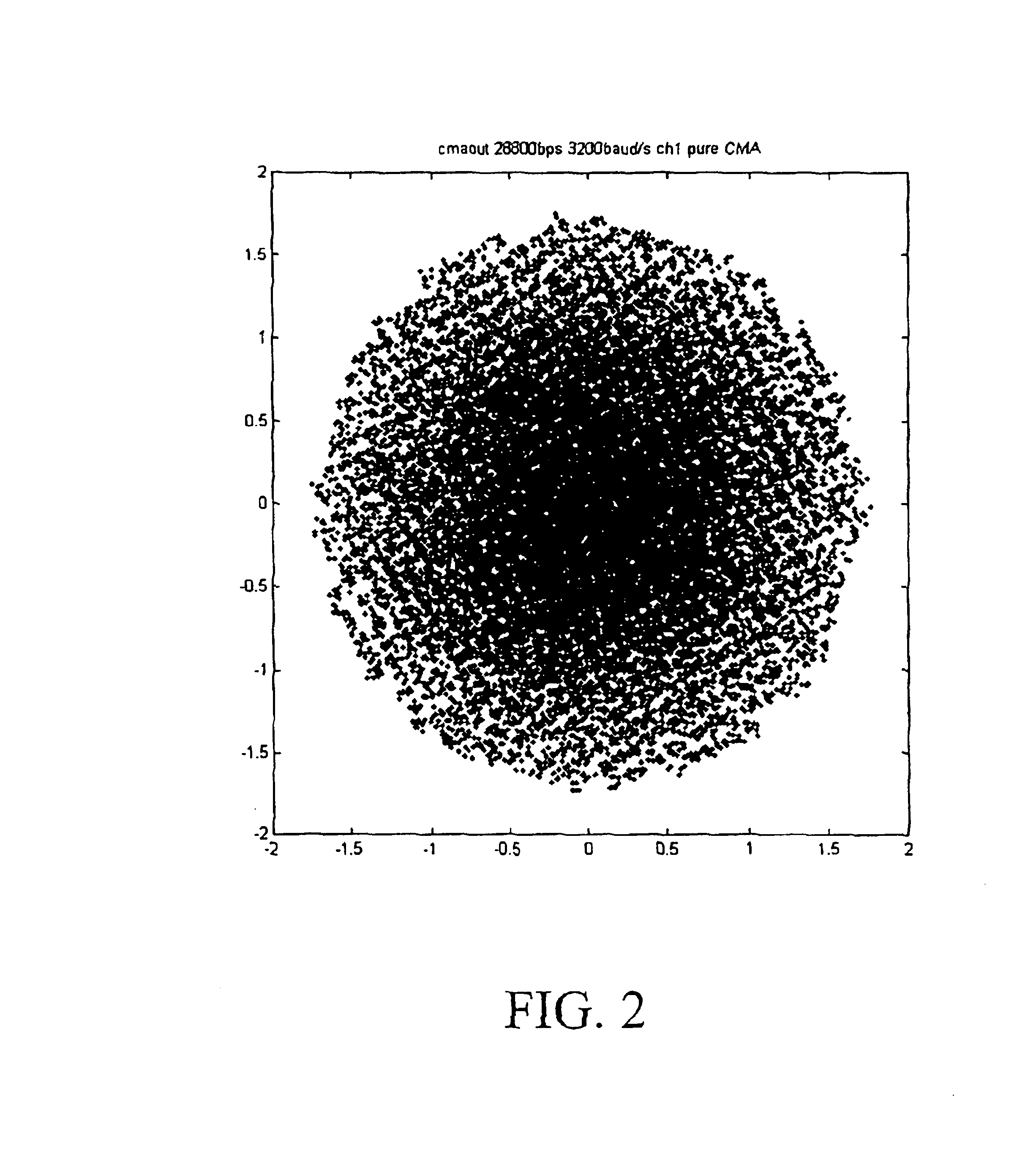Adaptive multi-modulus algorithm method for blind equalization
a multi-modulus algorithm and blind equalization technology, applied in the field of blind equalization methods in receivers, can solve the problems of inter symbol interference (isi), phase distortion, additive white gaussian noise, etc., and achieve the effect of reducing cost and reducing cos
- Summary
- Abstract
- Description
- Claims
- Application Information
AI Technical Summary
Benefits of technology
Problems solved by technology
Method used
Image
Examples
Embodiment Construction
[0040]FIG. 3 shows a convergence rate for the adaptive MMA algorithm exceeds the CMA algorithm as the adaptive MMA algorithm has multiple stages. By switching to subsequent stages, the convergence rate is increased because the constellation diagram is divided into more regions. A distance between any valid coordinate and its corresponding modulus is decreased by allowing more regions on the constellation diagram. Costs can be reduced more effectively by minimizing this distance, as explained later in detail. The adaptive MMA algorithm solves the problem of unacceptable convergence performance for QAM signals with large numbers of valid coordinates on the constellation diagram.
[0041]FIG. 4 is a constellation diagram illustrating a cost function. According to the CMA algorithm, all constellation points fall in an area bounded by a circle with a centre o and a radius R2′. The area of the circle is referred to as region and the circumference of the circle as modulus on the constellation...
PUM
 Login to View More
Login to View More Abstract
Description
Claims
Application Information
 Login to View More
Login to View More - R&D
- Intellectual Property
- Life Sciences
- Materials
- Tech Scout
- Unparalleled Data Quality
- Higher Quality Content
- 60% Fewer Hallucinations
Browse by: Latest US Patents, China's latest patents, Technical Efficacy Thesaurus, Application Domain, Technology Topic, Popular Technical Reports.
© 2025 PatSnap. All rights reserved.Legal|Privacy policy|Modern Slavery Act Transparency Statement|Sitemap|About US| Contact US: help@patsnap.com



